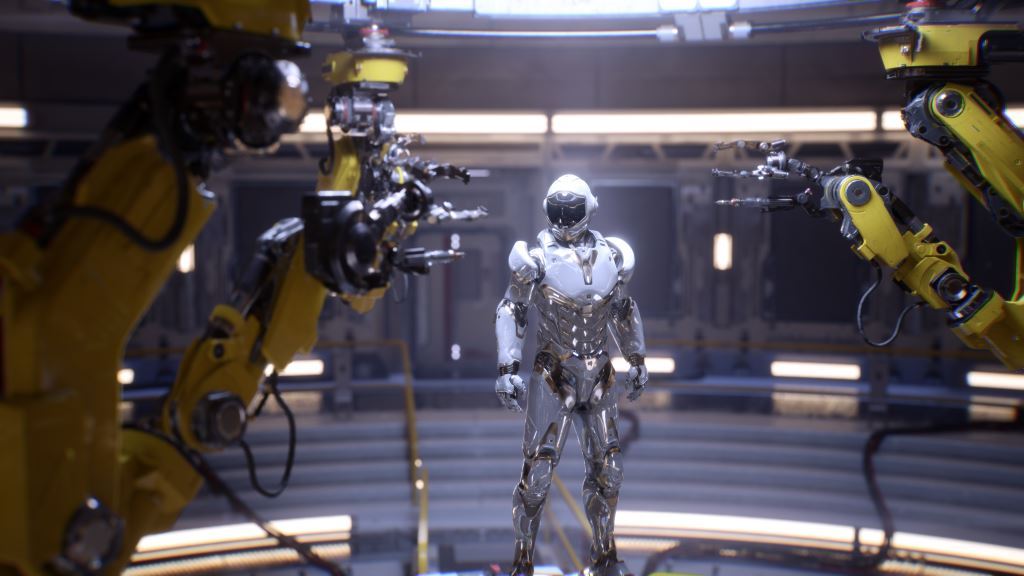Realtime Graphics in a Realtime World
Welcome to the Digital Era! A place where our devices are a normal part of our everyday lives. We now crave and seek out things that quickly entertain us. Experiences where we can feel connected or completely immersed and launch us into a different world. We’re constantly looking for interactivity and a connection to one another; after all, it’s human nature.
There are a whole lot of resources currently being dumped into technologies, such as VR and especially now AR, which is, in my opinion, going to completely take over and change life as we know it.
[Tips for Miking and Mixing Audio for VR]
As we accelerate into the future, project demands and requirements are becoming more difficult. Time schedules are being shortened and budgets are being tightened. To add to this, projects are also becoming more complex.
This requires the ability to create, analyze, and react in real time. Reactionary media (that’s what I’m calling it) is the solution.
Reactionary media is becoming mainstream in all market verticals. From the medical fields to live entertainment, it’s everywhere. Whether it’s a webpage, a video file, or an interactive generated piece of art. Our need for tools in the real time world has never been more necessary than the present.
Luckily, there are a number of different companies focusing on fulfilling those needs and solving these problems. A couple of the main companies creating some of these solutions stem from the gaming industry. Did you know that almost every major branded media playback solution on the market stems from there?
A daily selection of the top stories for AV integrators, resellers and consultants. Sign up below.
Last August, I had the opportunity to attend the Siggraph show and exposition in Vancouver, Canada. It’s one of my favorite shows because it unveils breakthroughs and emerging technologies in the computer-generated graphics industry. It also demonstrates many different types of upcoming immersive interactive solutions and hardware.
One of the main announcements in 2018 was the release of the new Quadro RTX line of graphics cards by NVidia. This was big news because they had announced that they were able to solve the “holy grail” of all computer graphics inherent issues. The real time rendering of light. Incredible!

But what does this do for us? It gets us one step closer to being able to render photorealistic scenes in real time. Unreal, a gaming engine software company, demonstrated a cool project for Porsche. It showed a rendering of a Porsche sports car, allowing the user to move lights around in the scene, showing off different photorealistic lighting possibilities while using a tablet device to interact with it in real time. It’s these types of solutions that are paving our way into the future and changing the way we look at, create and manage media.
Interactivity is another big demand in today’s AV markets. We’ve been seeing huge leaps and bounds in interactive devices and software-based solutions. These advancements help bridge logic to these new devices in order to help them communicate to the different real time rendering environments. Lidar and analytics are a few other emerging technologies that have recently entered the market allowing for the tracking of large groups of people in a space. This allows interactive displays to span large, open spaces seamlessly. Analytics feeds back data of how people are interacting with these different experiences.
These emerging interactive technologies all require one common element. The ability to create, analyze, and react in a world that requires real time-based solutions. Luckily for us, there are many different options that are available on the market today. These solutions are rapidly evolving and changing to the needs of the most complex projects.
As you begin exploring the possibility of integrating some of these new technologies into your next project, don’t be afraid to reach out to some of these companies to learn and test drive what they have to offer. There are a lot of different options available and resources can be found in many of the magazines and websites that you probably read today. I look forward to hearing about some of the amazing projects where you have used the latest in real time rendering solutions.
Want to hear more from Geoffrey Platt? Join him at The Video Show where he'll do a deep-dive into real-time graphics. Learn more: thevideoshow.com

